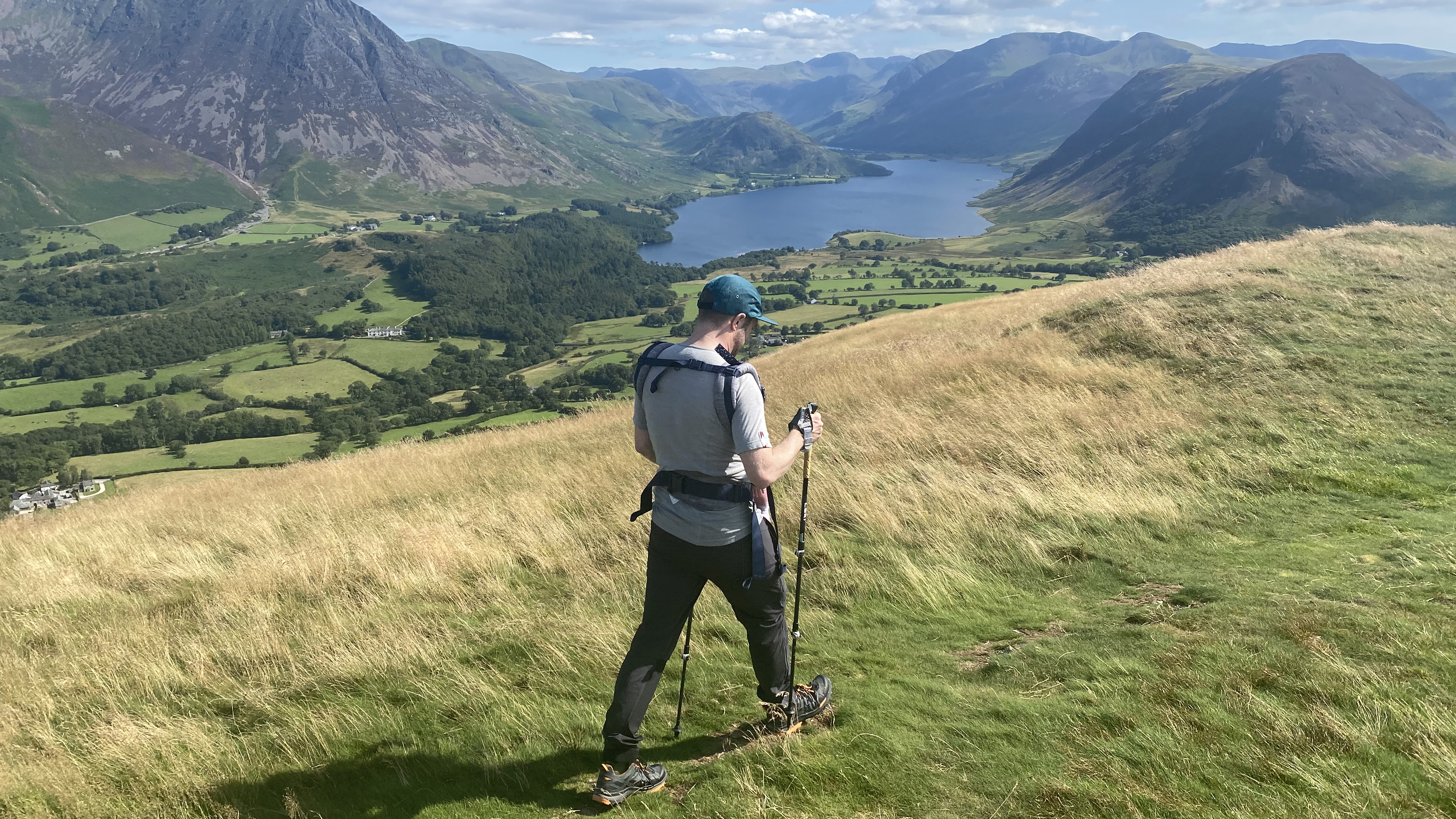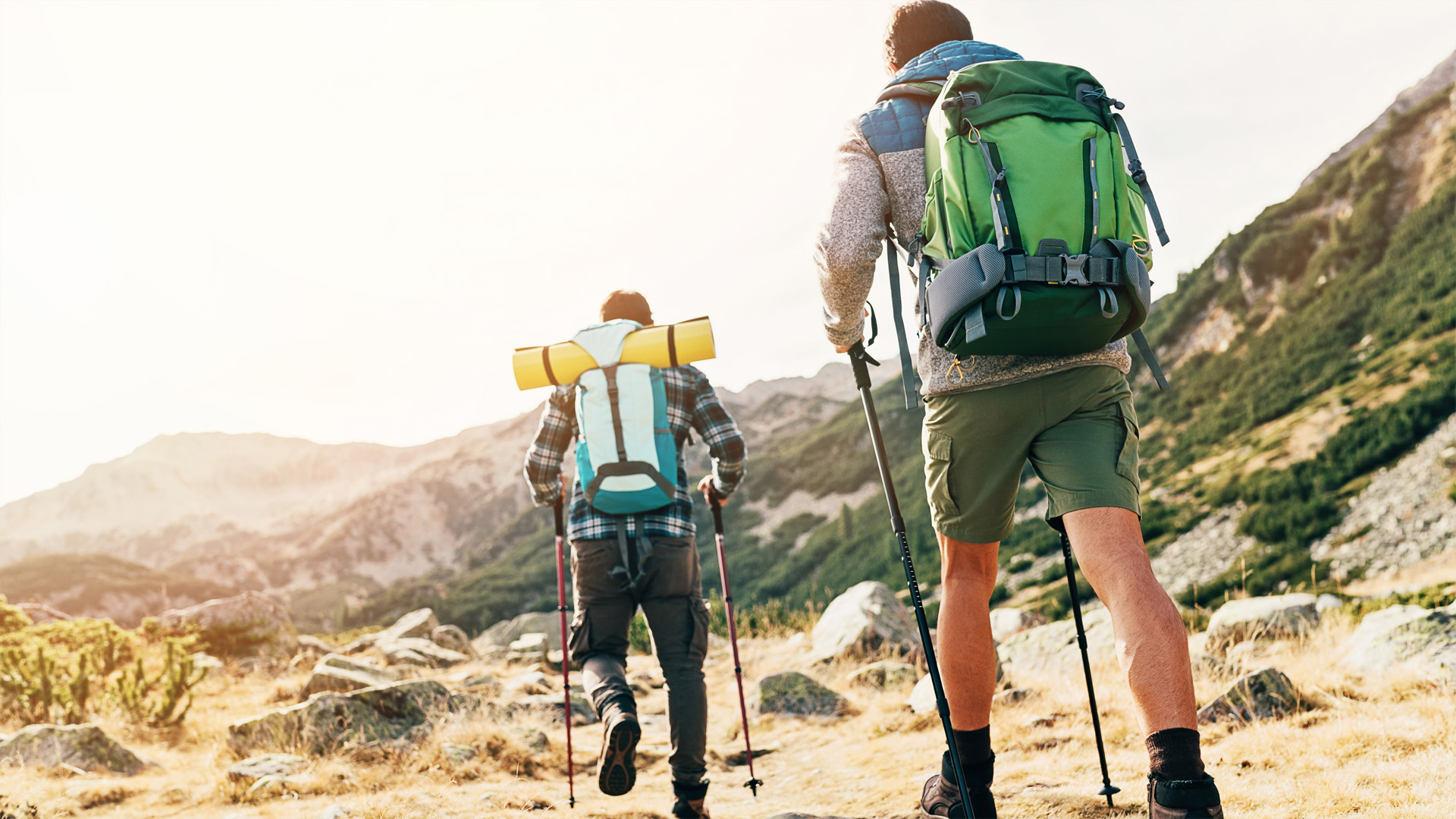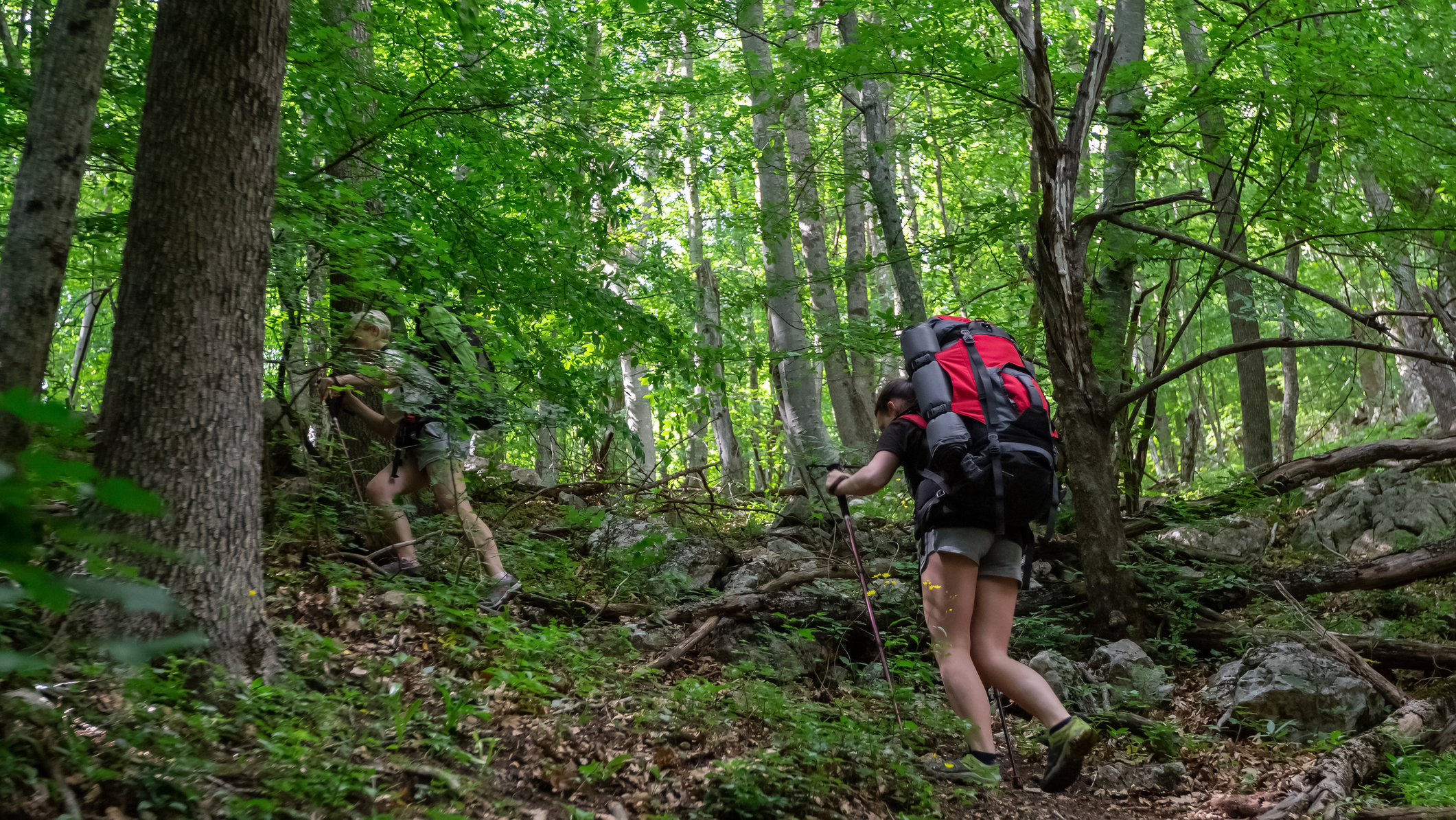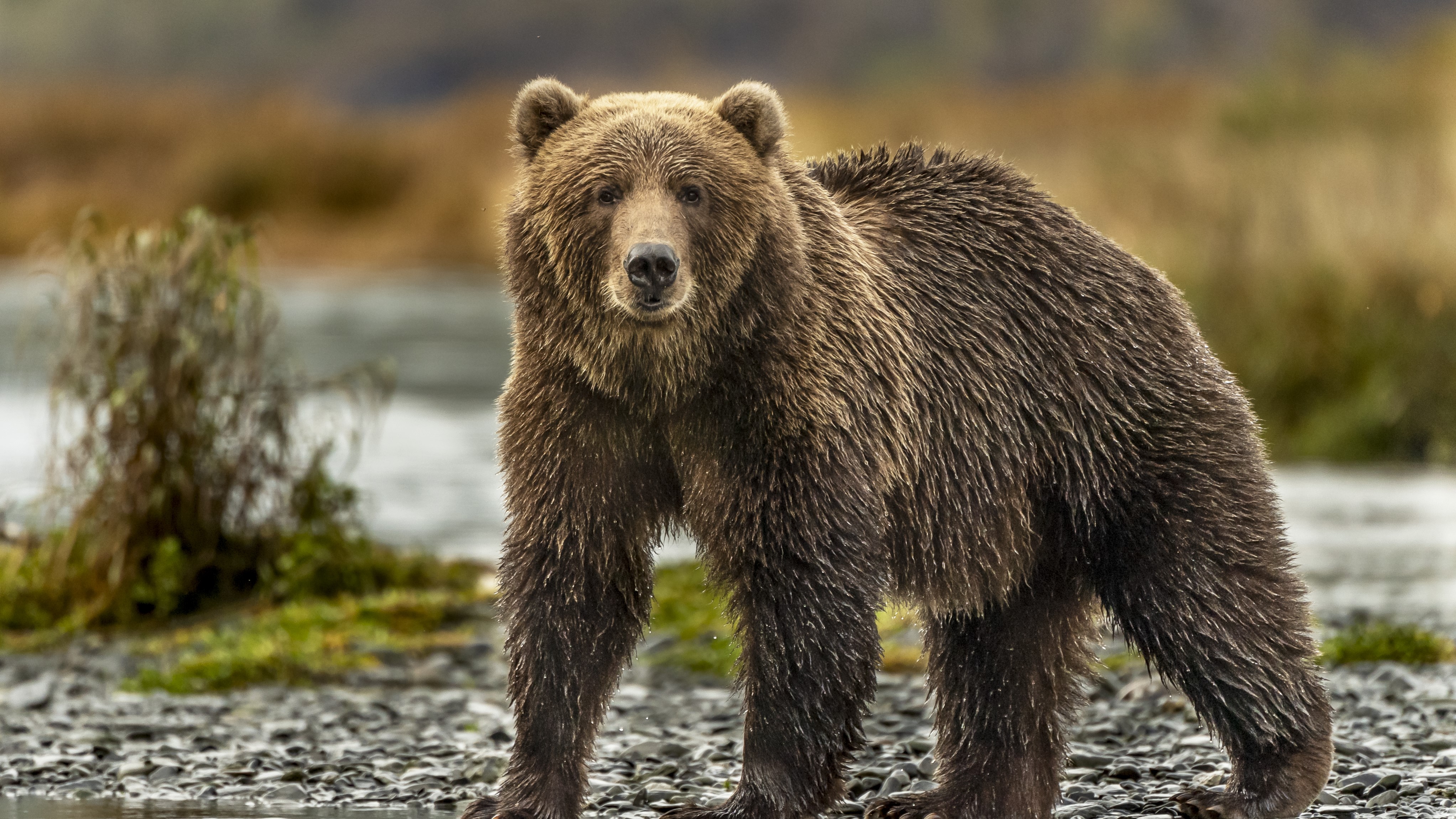9 reasons you need trekking poles: stability, safety, speed, longevity and more
Our hiking experts reveal 9 reasons you need trekking poles for your backcountry hiking, backpacking and trail running adventures

There are loads of reasons you need trekking poles. The most obvious is that they simply make hiking or running much easier, particularly if you’re covering significant distances or carrying a shed-load of weight. Studies suggest that the strain trekking poles take away from your legs is a little less than 10%, which doesn’t sound like loads. However, if you’re running 100 miles or thru hiking for several weeks, suddenly this seemingly minor benefit is massive.
However, the reasons you need trekking poles goes way beyond just helping your legs out. Like all the best outdoor equipment, poles are multi-functional tools that are useful when crossing rivers, negotiating snowy terrain or even when erecting a shelter. Plus, they have myriad uses in an emergency, including helping you to look bigger to make that mountain lion think twice about approaching. Just imagine how Gandalf vs Balrog would have ended if the grey wizard hadn’t had his staff! It doesn't bear thinking about.
In this feature, our seasoned hiking experts Pat and Alex have combined their trail nous to reveal 9 reasons you need trekking poles for your backcountry adventures.
Meet the experts

Alex is a qualified Mountain Leader and loves hiking, mountaineering and mountain running in all seasons. He uses trekking poles on everything from Highland skyraces and Lakeland hikes to winter mountaineering missions and days spent in the high Alps. Here, he reveals the main reasons you need trekking poles for your adventures.

Pat's adventurous lifestyle has taken him all over the globe, from scaling the highest mountain in Western Europe to setting FKTs in Australia and New Zealand. He knows the how much of a difference a pair of poles can make to the speed and efficiency of any backcountry adventure.
Today's best deals
What are trekking poles?
- Trekking poles are sturdy poles used to assist movement on the trail
- They’re typically made from carbon fiber or aluminium
- Most come in three parts and either fold or pack down telescopically

Trekking poles are sturdy poles that are used in pairs to assist movement on the trail. They spread the effort from the legs to the arms, taking some of the stress off knee and ankle joints and transferring it to the shoulders. Knowing how to use trekking poles enables the trail user to walk or run more efficiently, creating forward momentum with each stride.
These days, trekking poles are either made from lightweight carbon fiber or heavier but cheaper and more durable aluminium. Most are three-section models that are designed to be packed away easily. Some, like the excellent Leki Makalu FX Carbon poles, fold away into a small package for easy transportation. Others are telescopic, whereby each pole section slides into the next, like a telescope. Some are completely rigid, which makes them strong but also not the most portable option.
Let's get into the reasons you need a pair...
1) To take the weight off your legs
- Planting trekking poles down takes substantial weight off your legs

I was chatting to a Leki ambassador at an event in East London several years ago. He demonstrated, in a wonderfully simple manner, the way trekking poles reduce the weight your legs have to carry while on the trail. All he did was stand on a pair of weighing scales holding a pair of Leki Cross Trail Lite Carbon poles. When he planted them on the ground, the weight reading on the scales shot down.
Advnture Newsletter
All the latest inspiration, tips and guides to help you plan your next Advnture!
This simple demonstration showed how much of the strain poles take away from your legs, thus disproving the old argument that by carrying poles, you’re increasing the weight you have to carry. While this is technically true, using poles hugely reduces the weight your legs have to deal with, spreading the burden to your upper body too.
2) To extend your hiking life
- Using poles takes strain off your knees and other joins, extending your lifespan as a hiker

You only get one body in this life, so anything you can do to help it keep going longer and pain-free is a huge plus. Stress taken away from the legs by trekking poles means less stress on your knees and ankles. Not only will this reduce the risk of immediate injury, it’ll also mean that you’re extending your lifespan as a hiker, as you won’t be wearing your joints down as quickly.
3) For stability
- Four points of contact with the ground are better than two
- This is particularly true when carrying a heavy backpack

Quite simply, four points of contact with the ground are better than two when it comes to staying upright on uneven terrain, such as you’ll inevitably encounter while walking in wilderness areas, when tree roots, rocks and ruts are all out to trip the careless hiker. This is all the more true during multiday backpacking trips. When walking with a loaded hiking backpack, your centre of gravity is considerably altered – even if you’ve packed with scientific precision in regards to weight placement – and walking with poles can be really beneficial, even potentially life-saving if you’re traversing precipitous paths with drops offs.
4) For speedier missions
- Trekking poles enable forward momentum, increasing efficiency
- As the poles take the effort away from your legs, your legs will have more energy to go further

Many of the best lightweight trekking poles can also be used as running poles and there’s a reason the world’s fastest mountain goat-esque athletes use poles during their training and on race day.
Trekking poles allow you to create forward momentum with your arms and upper body while you’re walking – in exactly the same way as cross-country skiers employ ski poles. This greatly increases the efficiency of your technique, conserves energy and allows you to travel further and faster, especially while ascending or going across flat terrain. You may not intend to go speed walking or even running, and do don’t have to, but mastering this technique definitely facilitates economy of effort.
As already mentioned, using poles correctly takes some of the strain off your legs and transfers it to your upper body. Very few people DNF on an ultra because of tired arms. By letting your upper body do some of the work, you’re essentially giving your legs a break, meaning they’ll be able to keep powering up those ascents several hours into a race.
5) For tricky river crossings
- Poles can be used to probe beneath the surface when crossing rivers
- They also aid stability during the crossing

Mountainous landscapes are riven by gullies and ghylls, adorned with sensational waterfalls, wildlife-rich streams and sparkling lakes. High ground plays a crucial role in the water cycle and even on mountain landscapes that have since become barren, the passage of water is obvious in the forms it has left behind.
What this means is that mountains and rivers go hand-in-hand. When hiking in wilderness areas, far from roads and other infrastructure, it’s likely you’ll have one or two rivers to cross during any given day. After periods of snowmelt or rainfall, what was once a trickly can become a raging and intimidating, not to mention potentially fatal, torrent.
When hiking Munros or running skyraces in the Scottish Highlands, I’ve had to negotiate several difficult crossings and my trekking poles have always been a massive help. They allow me to prod beneath the surface, judging the depth and what the terrain is like under the water. Meanwhile, they also act as an extra point of contact when making my way across.
6) For adventures above the snowline
- Trekking poles give you additional stability on surfaces with questionable traction

Many winter walkers and mountaineers deploy trekking poles, particularly for those long walk ins and on the kind of terrain that’s not serious to warrant the attention of an ice axe. As well as all the reasons above, poles provide two extra points of contact, which is hugely beneficial when moving across surfaces with questionable traction. Of course, make sure your poles’ snow baskets are fitted to stop them sinking into the white stuff.
7) To swat your way along the trail
- Trekking poles allow you to swat away spiky vegetation
- They can also be used to move potentially dangerous creatures from your trail, keeping them beyond arm’s length

Hikers everywhere experience regular run-ins with vicious flora such as stinging nettles and thorny bushes, and exploring in some areas carries with it the risk of fauna frights too – stepping on a somnambulant snake snoozing beneath bracken can really ruin your day. After rainfall, give that recently soaked branch a tap to avoid getting wet when your daypack squeezes under it.
Trekking poles can be used to swish away everything from spider webs spanning the path to barbed strands of brambles. Of course, you should never use poles (or anything else for that matter) to provoke wildlife, but if you want to see whether a clump of grass contains any snakes, giving it a sweep with a trekking pole is a much better option than simply ploughing in.
8) For emergencies
- Poles can be used to take the weight off an injury
- In extreme cases, a makeshift stretcher can be made using poles and tent fabric
- Poles can also be used as a splint
- In animal encounters, poles can be used to make you look bigger

When exploring the remote backcountry, any loss of mobility can easily become an emergency. An injury like a sprained ankle, a nuisance at ground level, becomes a serious situation when high up on a freezing cold mountain that’s fully exposed to the elements. Movement is how we stay warm and the ability to move is what gets us out of trouble.
Depending on the nature of the injury in question, trekking poles can be used to help the casualty to safety. In less serious situations, they can be used like crutches, allowing the person to descend to a safe place without putting additional stress on their injury. In a more serious predicament, you can use trekking poles in conjunction with a tarp or tent fabric to create a makeshift stretcher. The caveat with the latter is that you’ll need at least two people to carry it. If you don’t need your poles for a stretcher, one can also be used as a splint to stabilize a broken limb.
Finally, if you meet a bear or mountain lion on the trail, the last thing you should do is run away, as both can run much faster than any human. The best option in a direct encounter is to make yourself as big and as loud as possible, while slowly backing away. Waving around lengthy trekking poles and hitting them against rocks is a very good way to do this. You’ll appear larger, louder and, most important, look less and less like an easy meal.
9) To create a shelter
- Poles can be used to rig a tarp for shelter
- Some one-person tents use trekking poles in their design, rather than traditional tent poles

This is another potential emergency use, or it could also be a planned one for the night. You can use a trekking pole as a stand when rigging a tarp for shelter. In fact, some of the best one-person tents are designed specifically to be rigged with the help of trekking poles, such as the Sierra Designs High Route 3000 1P and the Six Moon Designs Skyscape Trekker 1P. Trekking poles are generally much stronger and more rigid than tent poles, which is what makes them such a good option for this kind of use.
Alex is a freelance adventure writer and mountain leader with an insatiable passion for the mountains. A Cumbrian born and bred, his native English Lake District has a special place in his heart, though he is at least equally happy in North Wales, the Scottish Highlands or the European Alps. Through his hiking, mountaineering, climbing and trail running adventures, Alex aims to inspire others to get outdoors. He's the former President of the London Mountaineering Club, is training to become a winter mountain leader, looking to finally finish bagging all the Wainwright fells of the Lake District and is always keen to head to the 4,000-meter peaks of the Alps. www.alexfoxfield.com
- Pat KinsellaAdvnture Consulting Editor

